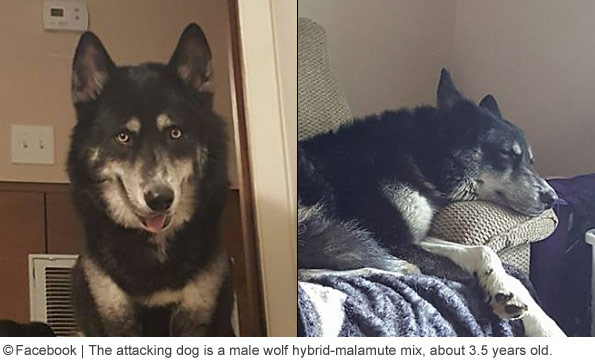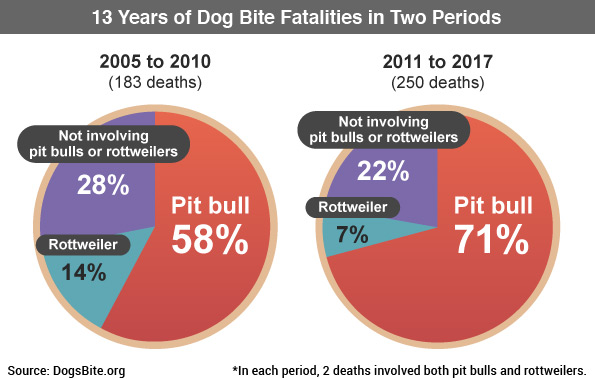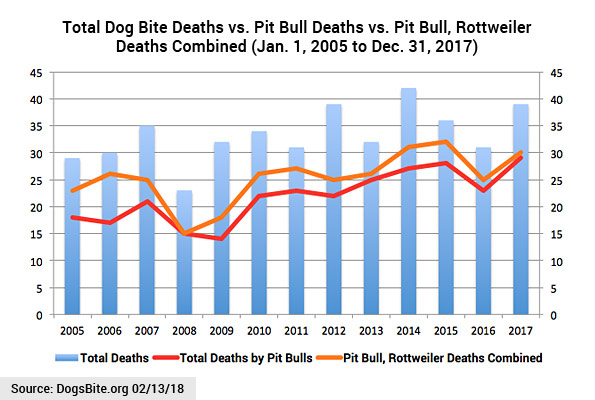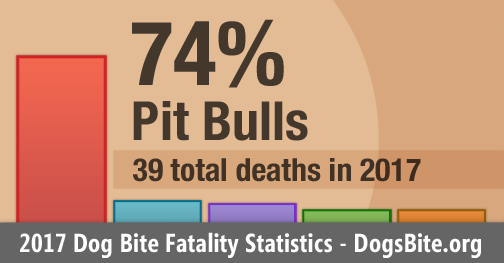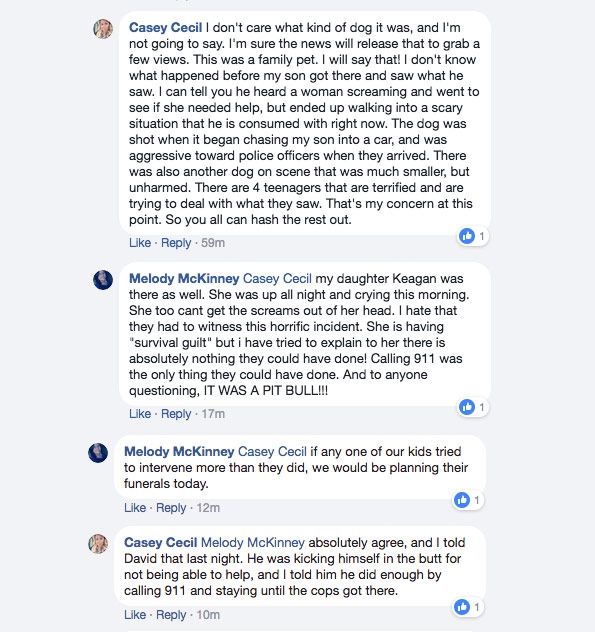Guilty of Felony Manslaughter; Ordered to Serve Maximum Time

Sentenced to Maximum
UPDATE 02/01/19: Without any fanfare, on January 14, Erica Nicole Jordan, 33, was sentenced to the maximum of four years in prison in connection to the death baby Loxli, according to the Missouri Courts website. On March 9, 2018, while under the babysitting supervision of Jordan, a pit bull-mix named "Smokey" latched onto the baby's head. "He just kept going at the baby's head. He was really aggressive," Jordan told police. Loxli Chavez, 13-months old, did not survive.
We obtained the police report under the Missouri Sunshine Law. We sought it out over the confusion of the dog's multiple breeds -- it was alleged to be a male "Labrador, malamute, pit bull" mix weighing 30-40 pounds at the age of 6. The 102 page police report states the dog is a "pit bull mix" in Jordan's own words multiple times, including in hospital records after Smokey bit Jordan's son on the head in 2016, and Jordan identifying the dog as a "pit bull mix" after it killed Loxli.
[Jordan] then stated "for the most part, the dogs run loose. Every once in a while, I would put the one that attacked the little girl [Loxli] in my son's room and the other dog in the kennel because they're not good with kids. I knew that because of a prior incident with my kids. The dog had attacked my kid and he had to have stitches."
I asked Jordan when this had occurred and she stated it was sometime within the last year. She stated the dog, identified as "Smokey" had been neutered since that time and "we thought he had calmed down."
I asked Jordan what kind of dog it was that attacked Loxli and she said it was a "pit bull mix." She stated "Smokey" was about 6-7 years old. - Officer Estes interview, March 13, 2018
Loxli died of multiple traumatic brain injuries, states the autopsy report. "In consideration of the circumstances surrounding the death, and after the examination of the body, it is my opinion that Loxli Chavez, a 1 year old female, died as a result of cranio-cerebral injuries, resulting a reported dog attack," states the report. Along with scalp fractures, contusions and punctures, bone fragments were embedded in her brain tissue. The manner of death was ruled homicide.
Jordan's "Homeless" Brother
It was the owner of the dog, Jordan's brother, who told police that his dog was a confusing mixture of Labrador, malamute and pit bull. Chris is also self-serving with a high degree of entitlement. Jordan told police that Chris was between homes at the time of the fatal mauling because his home in Scott City, Missouri had flooded. Jordan had been temporarily watching his two dogs -- the other dog was a small terrier-type. This arrangement had only begun about 10 days earlier.
Chris figures into the report early on. After police called and told him the nature of the attack, Chris only asked, "Will I get my dog back?" A short while later, while at St. Francis Emergency room, Officer Metzger interacts with him. "I was greeted by the owner of the dog, Chris ... I explained why the dog is being impounded and that the baby was in the process of being resuscitated," states the report. "Chris rolled his head and turned his body away from me," noted Metzger.
Chris then blamed his sister. "If she would have done what I told her to do, this wouldn't have happened." Chris said, "Smokey isn't dangerous, he doesn't like little kids" and the reason Erica's son was bitten by Smokey, is because her son "tormented and tortured Smokey by pulling and grabbing at him." Chris then said, "Law enforcement had no right to take his dog." Chris later called police and demanded, "If you're going to kill my dog, I'd like to keep him over the weekend."
Chris was denied any possession of the dog. The dog was euthanized March 27th and Chris was allowed to be present during the procedure.
Meanwhile, as demonstrated by both Jordan and Chris' early "tell all" statements to police about the dog's history of child aggression, along with Chris blaming the children for provoking the attacks, police continued to build an airtight felony case against Jordan. In December, Jordan avoided a trial by pleading guilty to second-degree involuntary manslaughter in a plea deal. Her incarceration date began on January 14, 2019, according to the Missouri Courts website.
Breed in Previous Bite
On 09-03-16, [juvenile] was taken to St. Francis by his mother, Erica, after being bitten by a "family pet." According to the records, the dog was a "pit bull mix" and the bite was "unprovoked." Nelson noted that [juvenile] had a "laceration to the left side of the scalp, laceration left side forehead" … For these lacerations, [juvenile] received 4 sutures to the left scalp and 6 sutures to the left side of his forehead. - Officer Estes narrative, April 9, 2018
6-year-old male presents status post dog bite that occurred 30 minutes prior to arrival. Dog bite from family pet which was a pit bull mix. He had 10 sutures put in his scalp on Saturday. He was bit by a dog. It was a family pet pit bull mix. Mother is primary historian, patient is very upset and difficult to discussed symptoms with -- he is very anxious. Mother states after the incident occur they came directly to the ER to be evaluated. - ED provider notes, September 4, 2016
The Guilty Babysitter
Erica Jordan is the guilty party in baby Loxli's preventable death -- there are no two ways about it. We believe, however, that Chris was initially being "gauged" by police too, given his narcissistic responses to them. Along with Jordan, Chris knew about the dog's previous attack, Jordan's new babysitting arrangement with two young children, and that Jordan had not told Loxli's mother about the dog's vicious propensities. In a recorded interview with Chris, police hinted at this:
I asked Christopher, "How long did she, Erica, have the dog?" Christopher replied, "At this house, about a week."
I asked Christopher, "Did his sister say anything to the mother about the dog biting anyone?" Christopher replied, "No." I asked Christopher if he had met [Loxli's] mom, Mrs. Bailey?" Christopher replied, "She was at my sister's for a brief minute, picking up the kid one day, but I was in the bathroom, so I really didn't get a chance to say anything."- Officer Metzger interview, March 19, 2018
While Jordan -- seemingly unbeknownst to her -- implicates herself over and over in her statements to police, she never defends the dog or blames the children like her brother does. Jordan is guilty of what she pleaded guilty to: second-degree involuntary manslaughter. Jordan omitted to Loxli's mother the dog had attacked a child before and allowed the dog to roam loose in the presence of baby Loxli while knowing the dog's vicious propensities. That is a criminal act.
12/01/18: Babysitter Pleads Guilty
Back in April, Erica Nancy Jordan, 33, was charged with second-degree involuntary manslaughter, a felony, and endangering the welfare of a child, also a felony, in connection to the mauling death of 13-month old Loxli Chavez. On Friday, in Cape Girardeau County Circuit Court, Jordan pleaded guilty to the charge of second-degree involuntary manslaughter as part of a plea deal. Prosecutors dropped the othe charge of endangering the welfare of a child as part of the plea agreement.
Jordan had been scheduled for a bench trial Friday, but reached the plea agreement before the trial began. The plea agreement did not include a punishment recommendation, reports the Southeastern Missourian. Cape Girardeau County assistant prosecutor Julia Koester urged Judge Benjamin Lewis to impose the maximum penalty of four years in prison. The sentencing hearing for Jordan was set for January 18, 2019 in Cape Girardeau County Circuit Court in Jackson.
04/06/18: Babysitter Charged
Police have charged a babysitter in connection to the death of a baby under her care last month. Erica Nancy Jordan, 33, was charged with second-degree involuntary manslaughter for acting with criminal negligence that resulted in the death of 13-month old Loxli Chavez. She was also charged with endangering the welfare of a child. Jordan admitted to police that she knew the dog was dangerous around children; the dog had "attacked" her own son last year, biting him in the head.
The dog belonged to Jordan's brother. After the baby's death, her brother told police the dog was a mixture of Labrador retriever, Alaskan malamute and pit bull terrier, only noting the pit bull aspect in the last part. Yet, it was a male dog that only weighed 40-pounds.1 We also now know the dog was 6 or 7 years old. Court documents more accurately depict "pit bull" as being the predominant breed (listed first), calling the canine a "pit bull Labrador malamute-mix named Smokey."
Jordan was "temporarily" taking care of a known biter for her brother while she babysat two new children = felony manslaughter charges.
At the time of the deadly attack, Jordan was also watching the baby's older sibling. In the probable cause statement, the mother of the baby stated the attack happened in the first week Jordan had babysat her children. She said it was never disclosed to her the dog had previously attacked Jordan's child or that it was unsuitable around kids. Jordan told police the dog had been neutered since it attacked her son; Jordan falsely believed this would remove the dog's aggression.
The Southeast Missourian provided more details from the probable cause statement. Jordan said Smokey was drinking water from a dog bowl within a few feet of Loxli just before the attack. She said she suddenly "heard screaming and crying" and saw "blood everywhere," according to the statement. Jordan said she tried to pull the dog away, but "he was so aggressive" and "just kept going for the baby." If convicted, Jordan faces a maximum sentence of four years in prison.

03/13/18: Attacker was Part Pit Bull
On Monday, KZIM KSIM Radio spoke to Cape Girardeau Police Public Information Officer Sergeant Rick Schmidt who said that the owner of the dog that killed the 13-month old baby stated the dog was a mixture of Labrador retriever, Alaskan malamute and pit bull terrier. Cape Girardeau Police also reiterated this on their Facebook page. The Alaskan pit bull is a designer breed involving 50% Alaskan malamute and 50% pit bull. One website even calls it a "Mally Pit."
Schmidt also confirmed the child was at the babysitter's home when the dog attacked the baby in the face. On Friday, police responded to a call about a "dog bite" incident at 2:12 pm to a home on North Hanover Street near Themis Street. When they arrived, they found the baby girl critically injured and quickly transported her to an area hospital. She was pronounced dead about 3:30 pm. The male mixed-breed dog, which weighs about 40-pounds, belongs to the owner of the home.
03/12/18: 13-Month Old Killed by Dog
Cape Girardeau, MO - On Monday, Cape Girardeau Police issued a media release about a 13-month old baby girl that was killed by a dog. Police did not release this information until three days after the child's death. Police received a call about 2:12 pm Friday regarding an animal bite in the 000 block of North Hanover Street. They discovered a dog that lived in the residence had attacked the young child. The baby was transported to a local hospital where she was pronounced dead.
The animal was impounded. Police have not released any breed information about the attacking dog. Various comments on the Cape Girardeau Police Facebook page suggest a babysitter was watching the child at the time of the deadly attack. "The child was not in the care of her parents," states one. It remains unclear if the baby lived at the North Hanover Street residence or if that residence is the babysitter's home. Ownership of the attacking dog remains unclear as well.
Afternoon Updates
The baby was attacked in the babysitter's home on North Hanover Street. Police described the dog as a 40-pound "mixed-breed" -- which can certainly indicate a pit bull-mix. KFVS reports police were told they were called in to investigate a "dog bite," but when they arrived, they found the baby severely wounded and immediately took her to an area hospital. She was pronounced dead about an hour later. The dog, referred to as a male, belongs to the owner of the residence.
This was not a dog bite; it was a violent dog attack involving a 13-month old baby girl. This information, combined with the description of the dog and questionable behavior of the person watching the baby (and the dog's owner if two people were involved), serve as strong indicators that a pit bull-mix may be involved and that a criminal element may be too. Over the 13-year period of 2005 to 2017, 75% of all dog bite fatalities resulting in criminal charges involved pit bulls.
Related articles:
03/09/18: 2018 Dog Bite Fatality: Pet Wolf Hybrid Kills 8-Day Old Baby Girl in Virginia
Law enforcement departments across the United States should release consistent "baseline" information to the media and the public after each fatal dog mauling, including these items.


